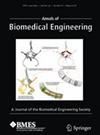A Microfluidic Approach for Intracellular Delivery into Red Blood Cells: A Deeper Understanding of the Role of Chemical/Rheological Properties of the Cellular Suspension
Abstract
Red Blood Cells (RBCs) are a promising drug delivery system candidate for many drugs. Using autologous cells helps to overcome biocompatibility issues, while microfluidics allows accurate control of the intracellular delivery of molecules through fluidic shear stress. With the ultimate goal of exploiting this delivery technique for clinical applications, we investigate how the chemical/rheological characteristics of the suspension and the properties of the RBCs in different animals influence the delivery mechanism. As regard the suspension of RBC, we study the effects induced by the hematocrit and by the presence of proteins such as albumin (Bovine Serum Albumin—BSA). Regarding the cellular properties of RBCs, we aim to investigate the exportability of the technique to the RBC of the most used animal models and identify the most suitable one. The presence of BSA implies a more significant variability of the intracellular delivery. However, 70 ÷ 94% of the cells have successfully encapsulated the probe molecule. Regarding the effect of hematocrit, however, the implementation of the experiment is more challenging due to the increase in viscosity and the easier sedimentation at low flow rates. Evaluation of intracellular delivery in the RBCs of various animal samples has instead led to the proposal of the mouse as the most suitable model for preclinical studies on this particular delivery approach.

 求助内容:
求助内容: 应助结果提醒方式:
应助结果提醒方式:


